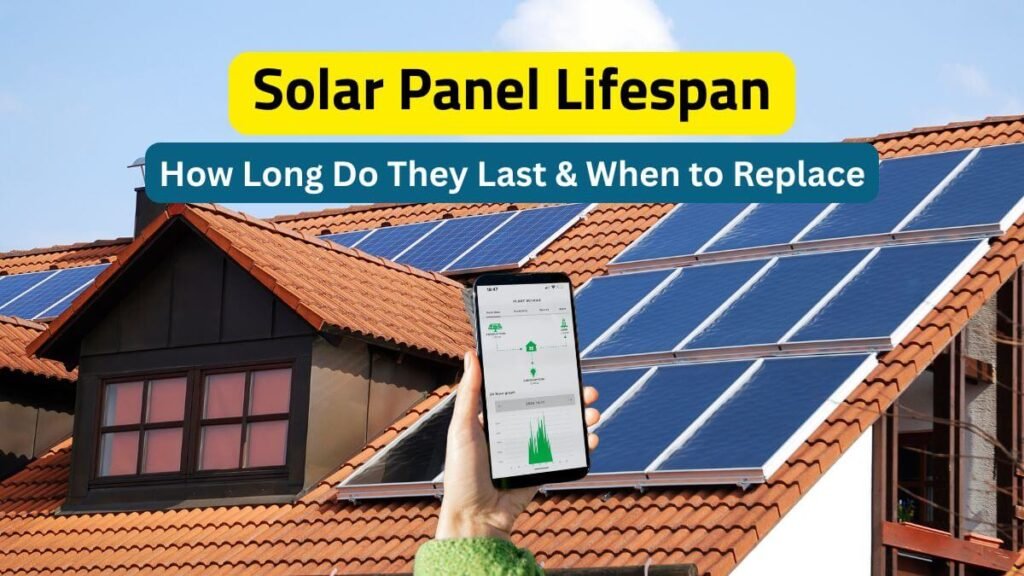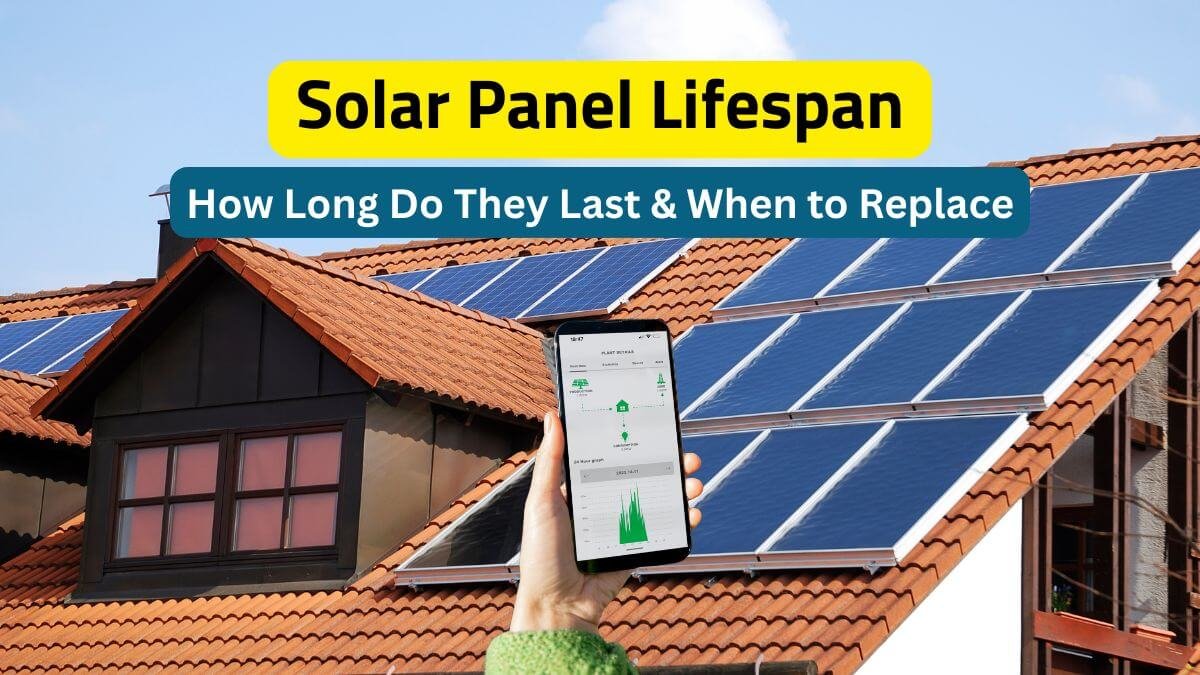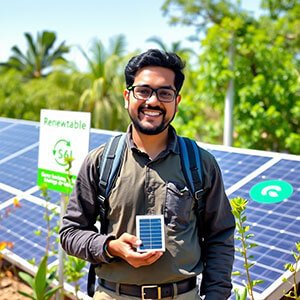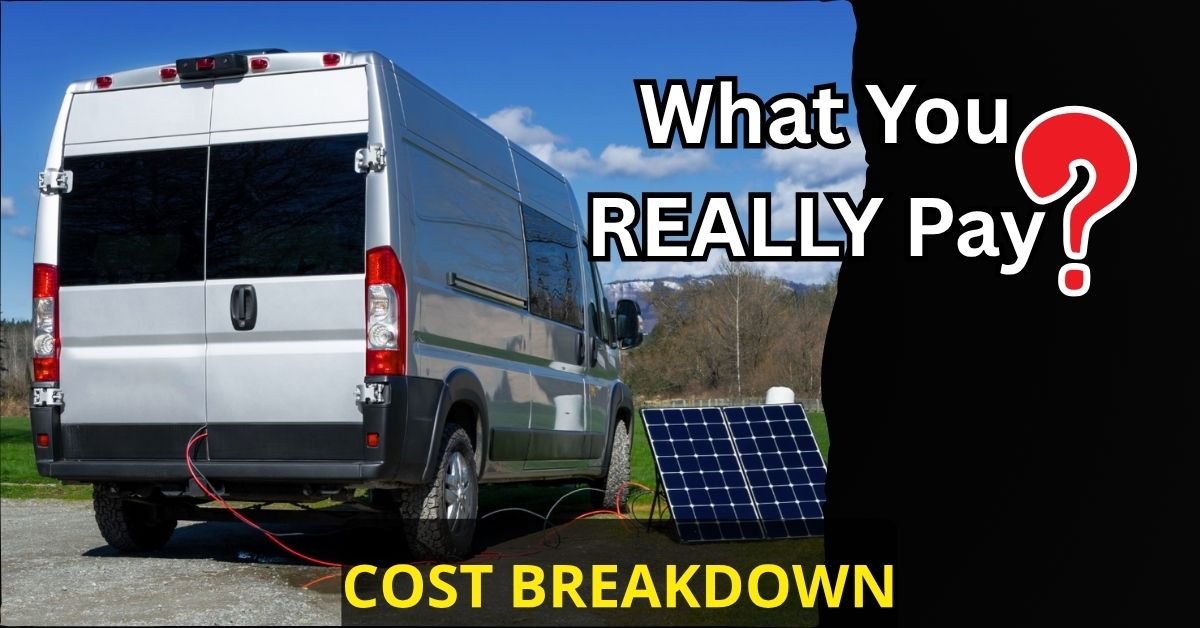Solar panels are a long-term investment, but how long can you really expect them to last? Understanding solar panel lifespan helps homeowners maximize efficiency and avoid unexpected costs. Most panels last 25-30 years, but their performance slowly declines over time.
In this guide, I’ll discuss about the average lifespan, key factors affecting durability, maintenance tips, and clear signs it’s time for a replacement.
Solar Panel Lifespan
When you invest in solar, you’re not just buying a product, you’re securing decades of energy independence. But even the best solar panels won’t last forever.
Average Lifespan of Solar Panels
On average, most residential solar panels are designed to last 25 to 30 years. However, this doesn’t mean they suddenly stop working after three decades. Instead, their energy output gradually decreases over time, a process known as degradation.
- Tier 1 panels (like those from SunPower, REC, or LG) may retain up to 92% efficiency after 25 years.
- Standard panels usually maintain around 80-85% of their original output after the same period.
Key Takeaways:
- Most solar panels last 25-30 years
- Output decreases gradually due to natural wear
- Warranties ensure minimum efficiency levels over time
Good to know: Many manufacturers back their panels with a 25-year performance warranty, which guarantees output won’t fall below a certain percentage (typically 80%) during that time.

Factors That Affect Longevity
Not all solar panels age the same. Key factors influencing solar panel lifespan include:
1. Solar Panel Type
- Monocrystalline: Highest efficiency, slowest degradation (~0.3–0.5% per year)
- Polycrystalline: Moderate efficiency, slightly faster degradation (~0.5–0.8% per year)
- Thin-Film: Lightweight but degrades faster (~1% per year)
2. Climate & Weather Conditions
- Extreme heat accelerates wear, while cold climates may extend lifespan
- Hail, heavy snow, and salt air (near coasts) can cause physical damage
3. Installation Quality
- Poor mounting or wiring leads to premature failure
- Certified installers ensure optimal tilt and ventilation
4. Maintenance Habits
- Regular cleaning (dust, bird droppings) prevents efficiency loss
- Annual inspections catch loose connections or micro-cracks
Degradation Rate by Panel Type
Not all solar panels degrade at the same rate. The type of panel you choose impacts how quickly its performance declines over time.
| Panel Type | Annual Degradation Rate | Estimated Efficiency After 25 Years |
| Monocrystalline | ~0.3% – 0.5% | ~92% |
| Polycrystalline | ~0.4% – 0.6% | ~88% |
| Thin-Film | ~0.7% – 1.0% | ~75% |
Monocrystalline panels are known for their durability and lowest degradation rate, making them ideal for long-term use.
Maintenance & Monitoring
Proactive care extends your solar panel’s lifespan:
✅ Do:
- Clean panels 2-4 times yearly (more in dusty areas).
- Trim nearby trees to avoid shading.
- Check monitoring apps for sudden efficiency drops.
❌ Don’t:
- Use abrasive cleaners or high-pressure hoses.
- Ignore error alerts from your inverter.
- Let debris (leaves, snow) accumulate for weeks.
Signs You Need a Replacement
Even the best-maintained panels will eventually need replacing. Here’s how to know it’s time:
- 📉 Severe Drop in Efficiency: If energy production falls below 70-75% of the original output.
- 💡 Increased Energy Bills: If your utility usage spikes despite normal weather and usage patterns.
- 🔌 Frequent System Errors: Constant faults or inverter failures may point to aging panels or wiring.
- 🏚️ Visible Wear & Tear: Cracks, delamination, or corrosion can reduce efficiency and safety.
- 📆 Beyond Warranty Period: If your panels are over 25 years old, upgrading may offer better ROI with today’s improved tech.
Final Advice
Solar panels are built to last decades, but planning ahead saves money. If your system is:
- Under 15 years old: Focus on maintenance.
- 15-25 years old: Monitor degradation closely.
- Over 25 years old: Start researching replacements.
Need help assessing your panels? Contact a local solar expert for a free efficiency check!
Frequently Asked Questions (FAQ)
Q: Can solar panels last longer than 30 years?
A: Yes, many panels continue functioning beyond 30 years, though their output typically drops below 80% of their original capacity.
Q: What happens to solar panels at the end of their lifespan?
A: Panels can be recycled through specialized programs, and some manufacturers offer take-back services.
Q: Should I replace my solar panels if they’re still working?
A: Not necessarily. If your system is still producing sufficient power and has no major damage, replacement isn’t urgent.
Q: How can I check my solar panel’s performance?
A: Use your system’s monitoring software or hire a technician for a detailed inspection.
Q: Does extreme weather shorten the solar panel’s lifespan?
A: Prolonged exposure to hail, hurricanes, or excessive heat can impact longevity, but modern panels are designed to withstand harsh conditions.
You can read: Top 10 Solar Gadgets For Home, You Can Use.
Ready to Future-Proof Your Solar Setup?
Thinking about upgrading or want to keep your panels performing at their best? Start by reviewing your system’s current efficiency. And if you’re approaching the 20-year mark, it might be time to explore new high-efficiency options for even more solar savings.
👉 Have questions about your system’s performance? Drop them in the comments or contact a local solar pro for an inspection!







